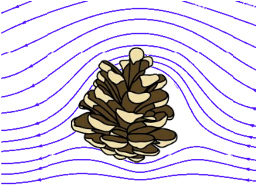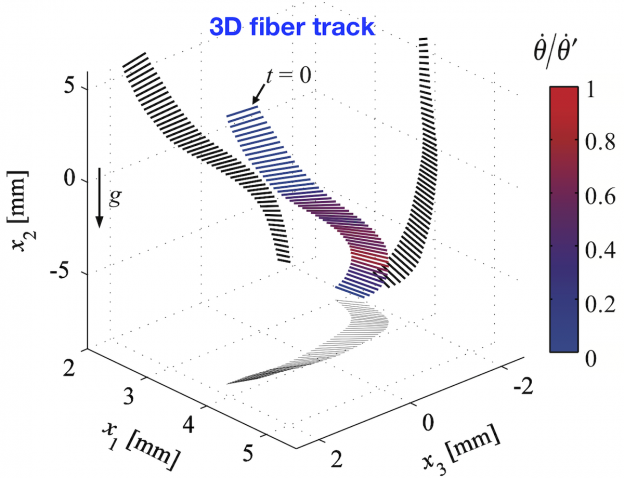The motion of elongated, axisymmetric particles such as fibers or rods in turbulent flows is important for the basic understanding of the orientation dynamics of anisotropic particles. Knowledge of length and inertial effects on fiber-turbulence interaction is essential for controlling processes in paper manufacturing, and composite material fabrication, as well as for developing more accurate models to predict atmospheric particle dispersion. For example, ice crystals may be shaped as elongated rods and their orientation in the upper layers of the atmosphere affects the earth’s albedo that is an important input to models predicting the global heat balance.
Here we study the the orientational and translational dynamics of anisotropic particles (such as pollen and fibers) dispersed in isotropic turbulence. Especially the effect of particle inertia (as indicated by the Stokes number has been quantified).
Recently we have started to investigate the fiber orientation dynamics in a non-homogeneous turbulent boundary layer flow as part of a research project funded by the Israeli Ministry of Energy (grant no. 1596/15). Both length effects as well as inertial effects are studied.
Starting October 2019, we start research on “Control of fiber orientation dynamics in the near-field of a coaxial (impinging) jet by flow structure manipulation” funded by the Israel Science Foundation (ISF) under grant no. 2199/19
Students working on this: Subhani Shaik (PhD), Vladislav rinsky (MSc)
Completed thesis: Dr. Lilach Sabban (PhD and MSc)
Completed MSc thesis: Sofia Kuperman (MSc)
Funding Agencies: Israel Science Foundation, Ministry of Energy

